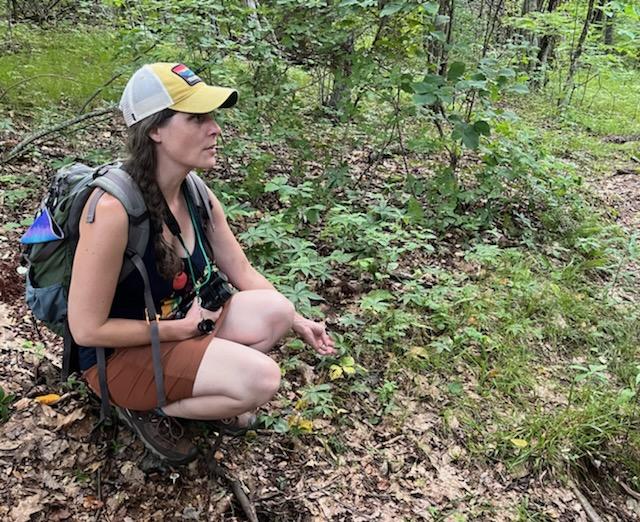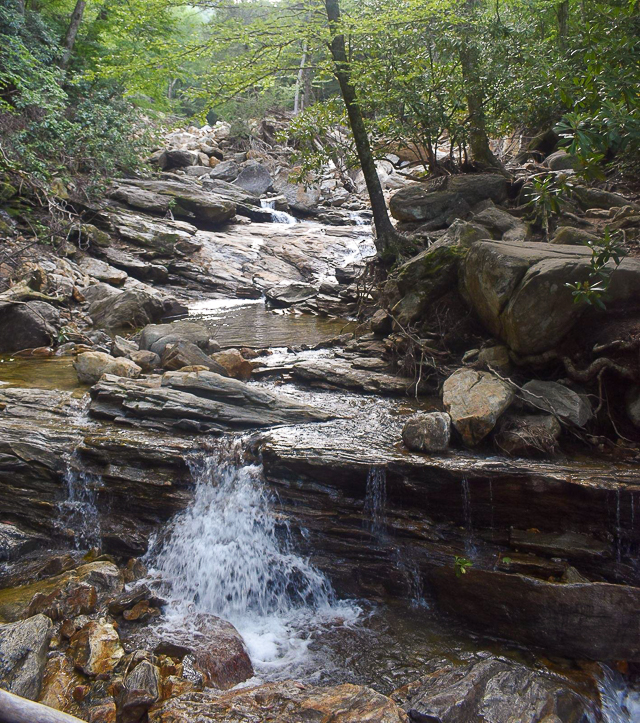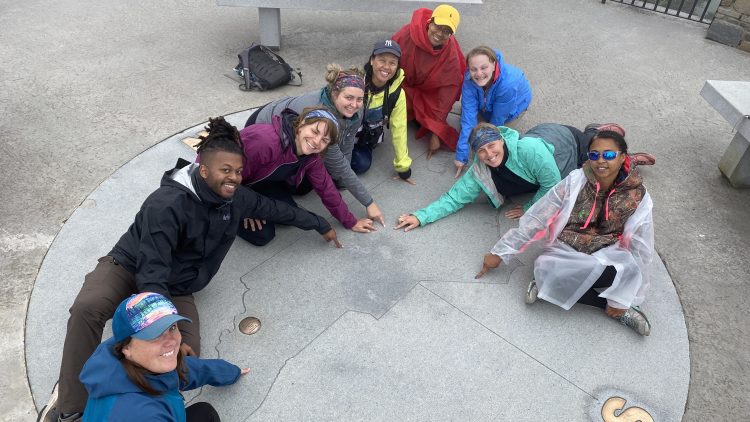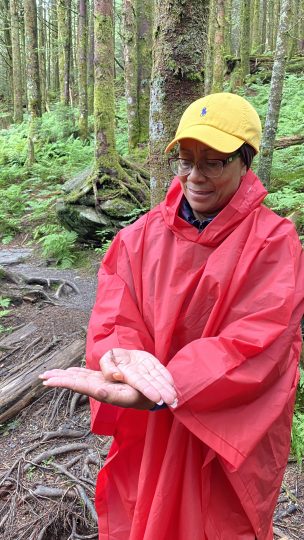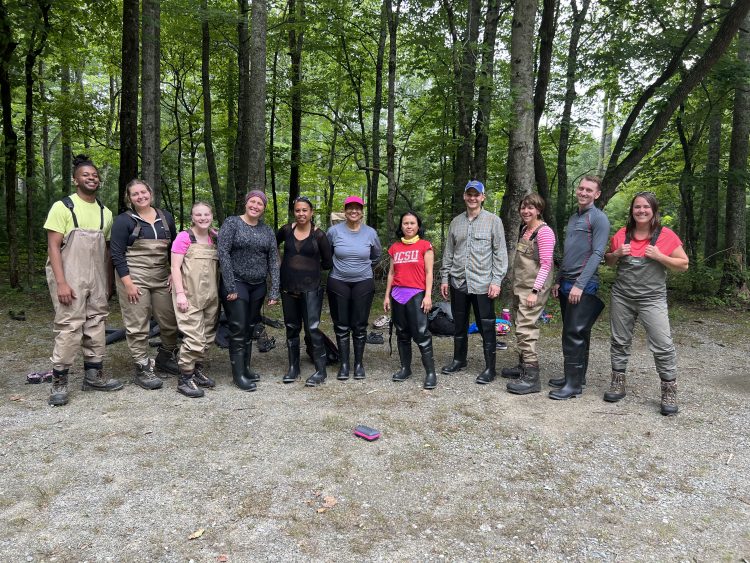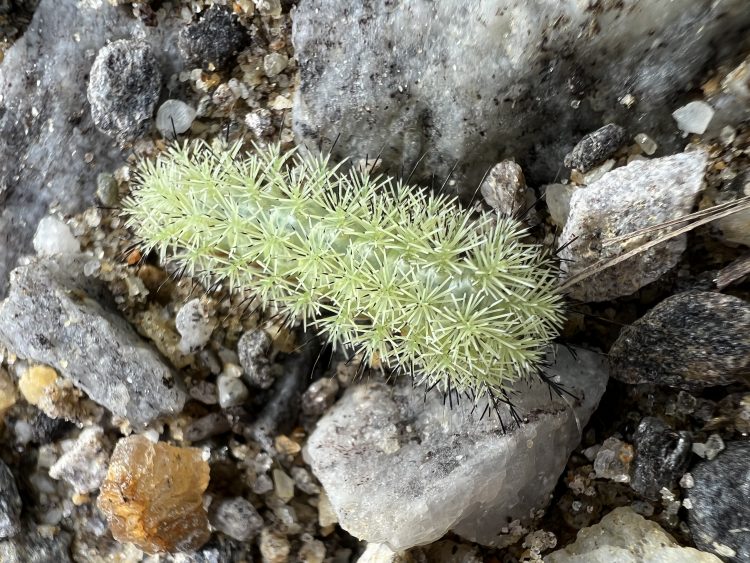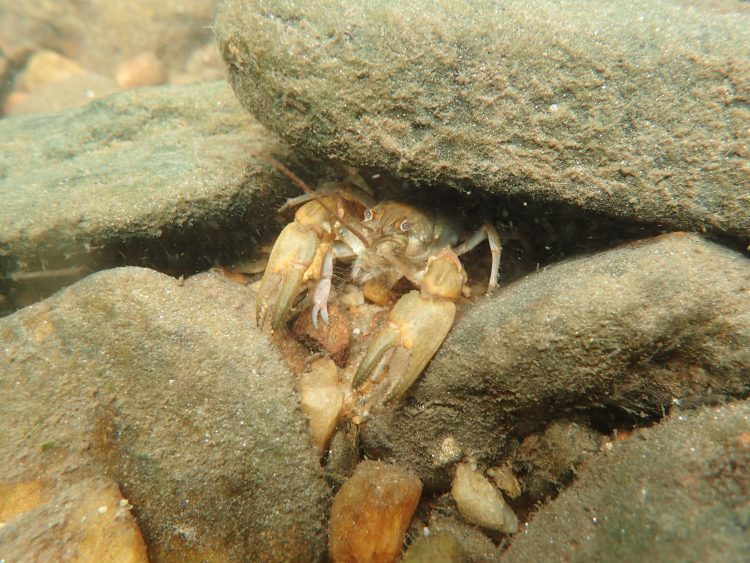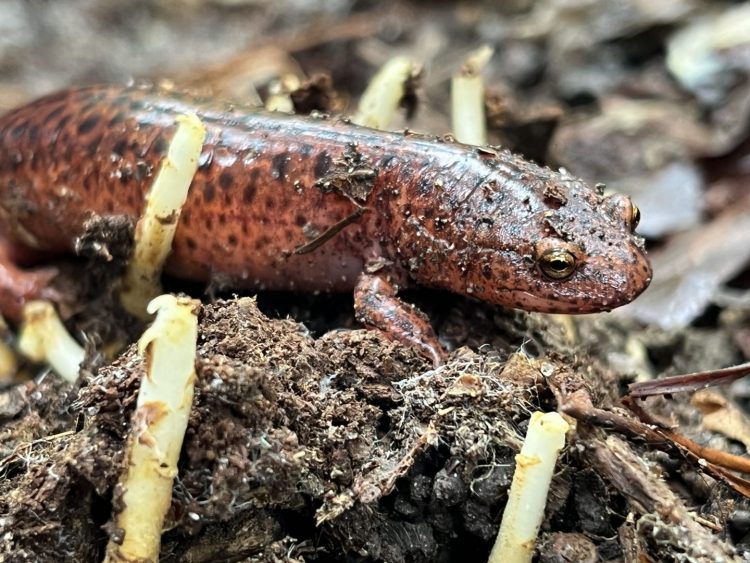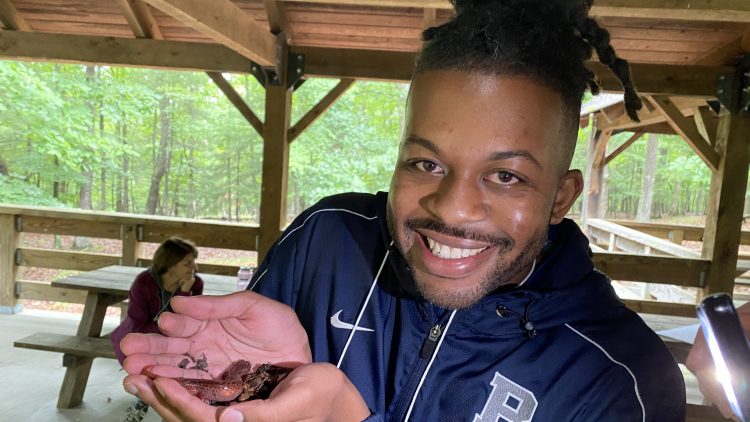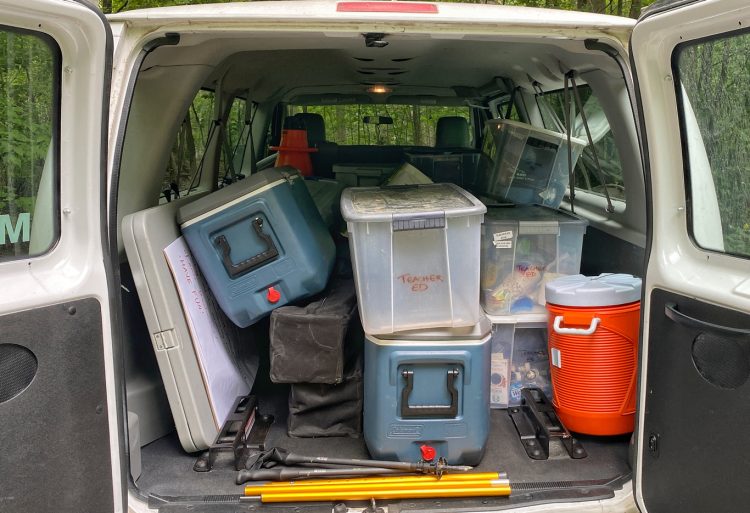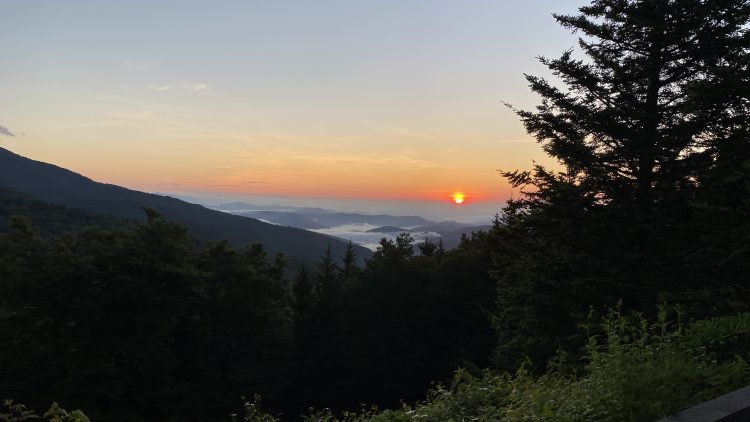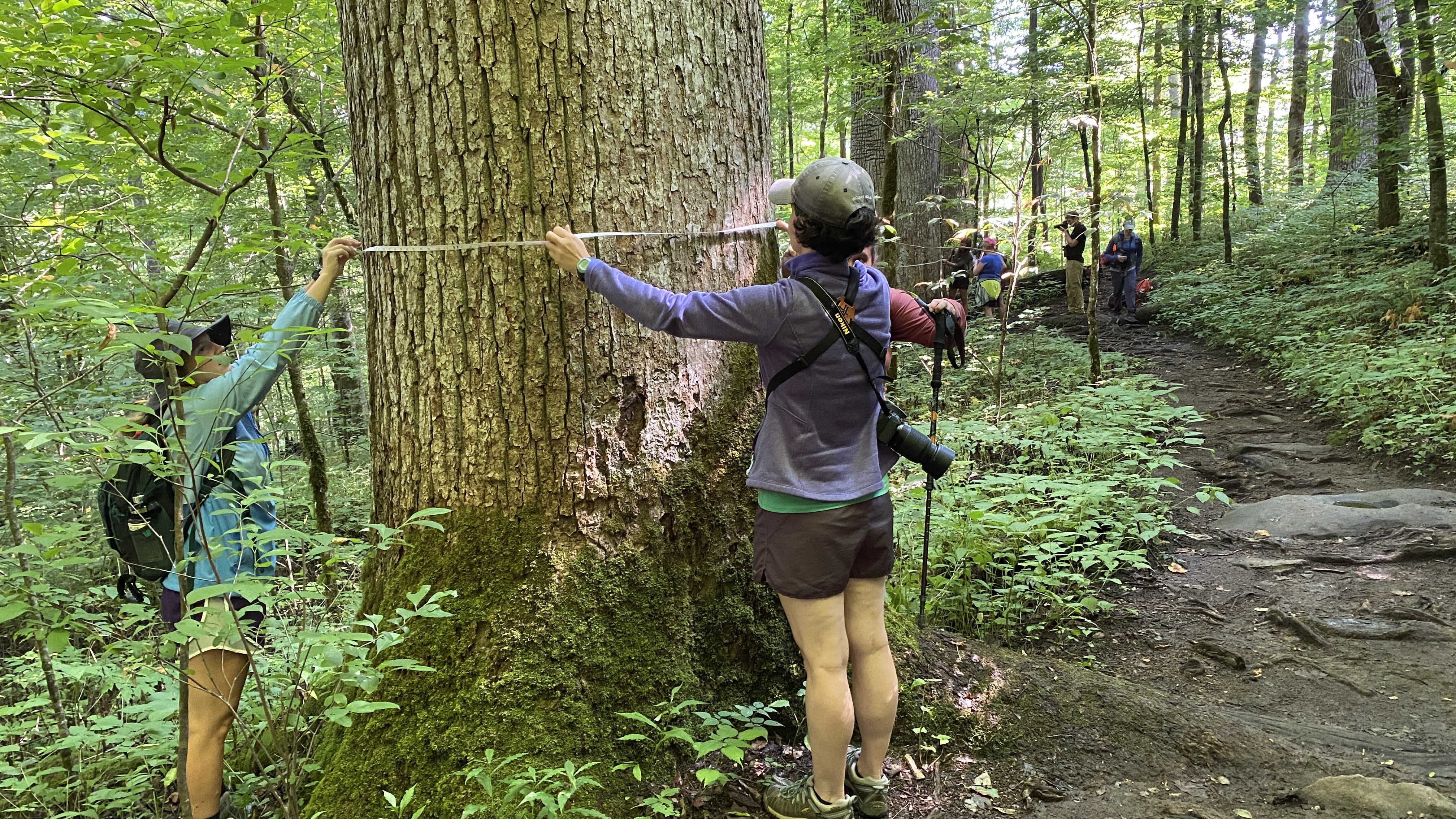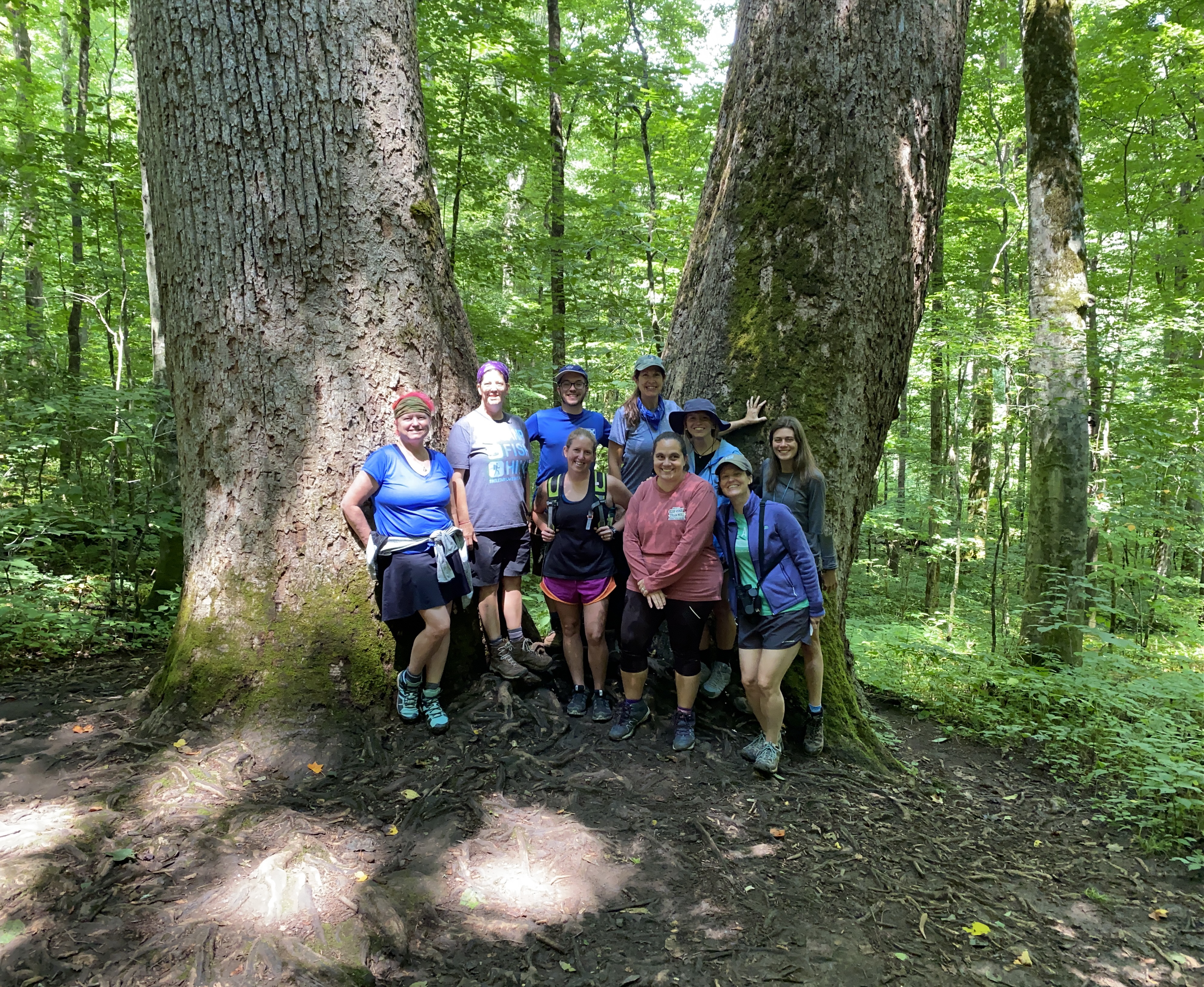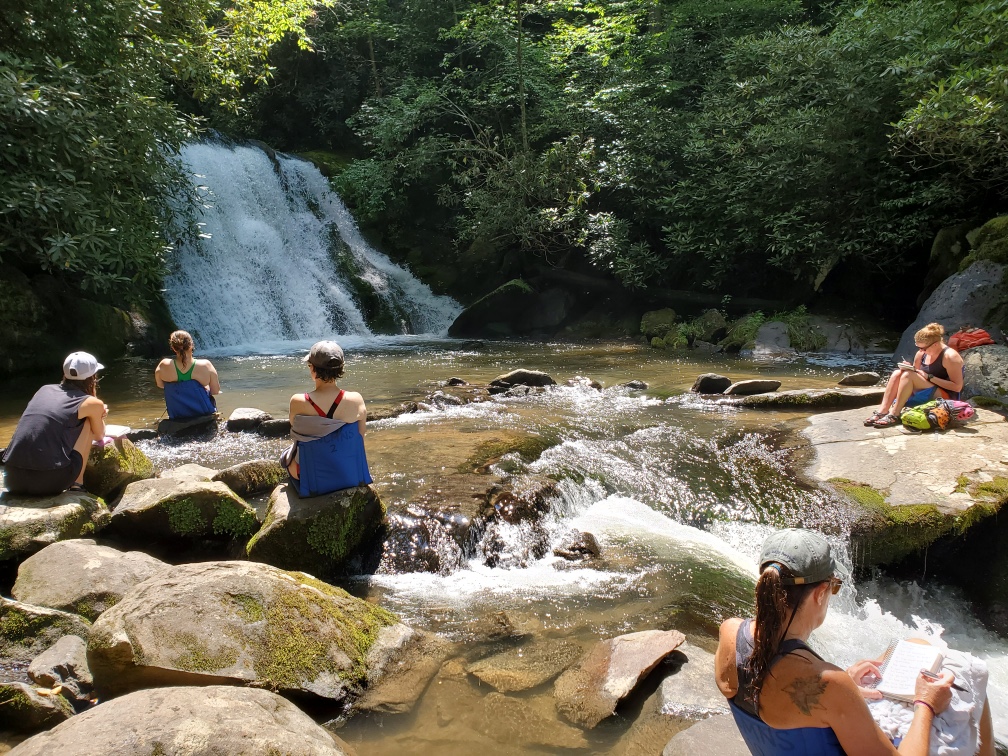“Final Day”
July 18, 2022 - 1 Comment
Our team spent our final day measuring old growth trees (some close to 500 years old) at Joyce Kilmer – Slick Rock Wilderness. We measured the circumference and then calculated the diameter of each one but then also asked and tested how many of us would wrap around a tree? Which one of us is the same height as the tree’s diameter? The group loved mixing the scientific data collection with more whimsical estimates. Our final stop was Yellow Creek Falls, where we played in a cold swimming hole, swam to the falls itself, and found time to write, knowing that we would all share our writing later this evening. We closed our day doing just that, as well as sharing our hopes for what we will take away from the Blue Ridge Institute, and our appreciation for the experience.
This is an excerpt of Sarah’s writing:
Vocabulary
New words knock through the corners of my brain,
Upturning rocks and damp crevices to new worlds unknown.
Endemic — unique to an area.
Native
Particular
Can a week of exploration be endemic?
Not to be replicated, unique to place, time, and this set of 12 humans.
Early and late succession – what comes first to the land after a disturbance,
and the sequence of events, plants, species thereafter.
Like a story — setting, conflict, rising action, climax, resolution.
Repeatable but not replicated.
Perhaps 2020 was the worldwide disturbance,
Making all of us early succession teachers and learners.
Precariously revived with the shallow but rich soil of vulnerable willingness.
Radio telemetry, pit tags, migration data banks –
One by one to the masses, seeking and finding
the spruce fir moss spider, or
gray cheek salamander, or
the mighty and ancient hellbender.
Distinct and cooperative worlds of innovation, attention, and ingenuity –
Totally unfamiliar to me.
What other worlds and passions are beyond my scope of vision?
What else will arise that I didn’t know I loved.
Spotting scope, jewel loupe, bug box
The earthy smell of moss and compelling whiff of hickory nut.
What else?
Kinglet! Thrush! Junco! Warbler!
Bird songs of “here I am” and “chicken chicken chicken chicken”
And?
Spruce or fir?
No…. A hemlock.
Blue and black cohosh, wine berries, skunky galax and endless rhododendrons.
Here’s to the next world of detailed delight.
Here’s to the next succession of teachers and learners to take this journey.
To see photos from our final day check out @ncmnsteachered on Instagram

